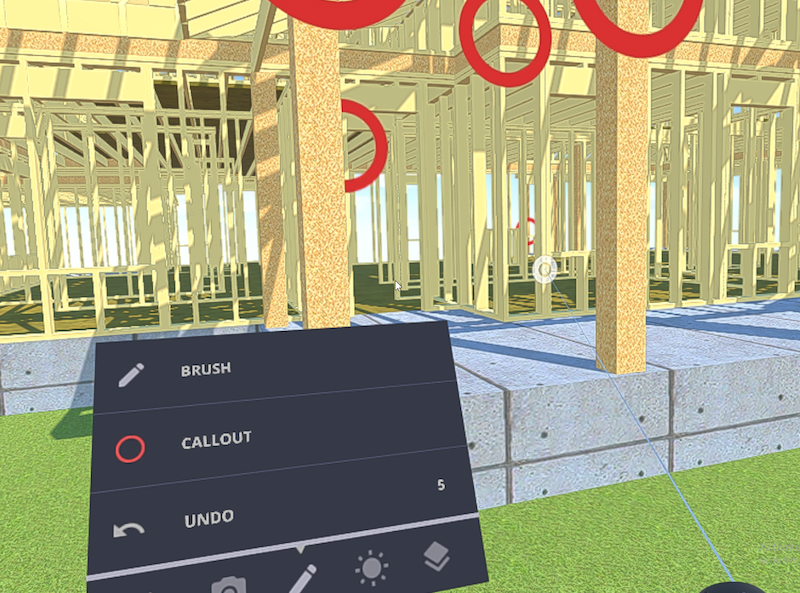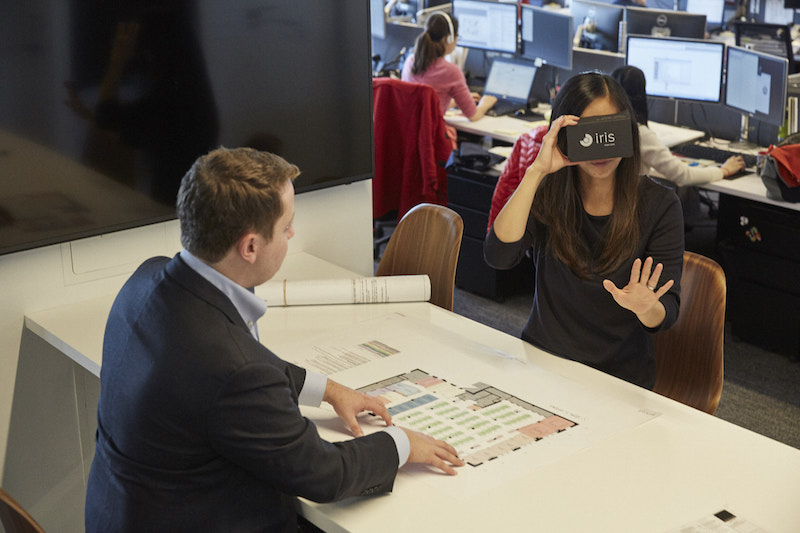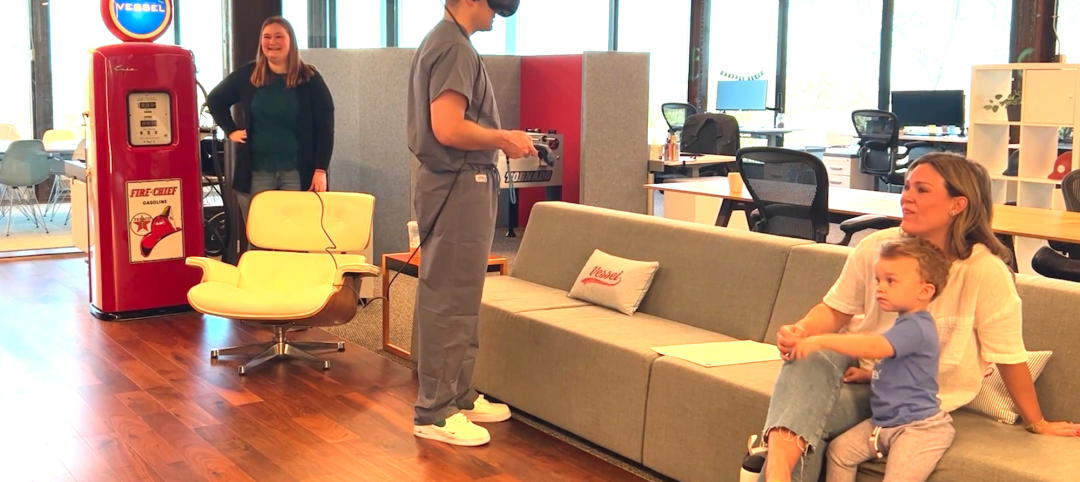Add to the growing list of tech companies that are integrating virtual reality into the architectural design process IrisVR, a startup platform that used this week’s Autodesk University event in Las Vegas to launch two products that allow AEC professionals to instantly visualize, explore, and share 3D models with virtual reality.
Its technology—which already has aroundn 20,000 users as a result of two years of beta testing—ets AEC pros curate VR walkthroughs, create life-like presentations, and interact with virtual models. The new products are:
•IrisProspect, a software program that installs plugins which enable users to send files created with the latest versions of Revit, SketchUp, OBJ, and Rhino directly into VR from one’s desktop. Prospect also allows users to quickly create immersive walkthroughs using Oculus Rift and HTC Vive.
•IrisScope allows users to upload, view, and share 360-degree panoramas with a mobile phone and Google Cardboard or Gear VR. Scope supports all leading pano formats, and is available for both iOS and Android devices.

IrisVR's Prospect software provides uses with the immersive walkthrough experience. Image: Courtesy of IrisVR
The basic package of these products is free (to download, click here). For $200 per month users can upgrade to a Pro account, which enhances Prospect with features such as dynamic lighting, annotations, screenshot capture and a scale model mode. The Pro account for Scope, at $40 per month, allows unlimited uploading and other features. IrisVR is offering a bundle of the Pro versions for $210 per month.
IrisVR is releasing these products after two years of extensive beta testing with partners such as Marmon Mok, which used Prospect to help the owner of University Hospital in San Antonio identify optimal patient movement and nurse site lines for infusion centers that the firm was designing. Before embarking on a major renovation of Loyola University Medical Center in suburban Chicago in February 2015, Mortenson Construction used Prospect to design and review with doctors and nurses how they would be using the new space.
“IrisVR gives us the ability to do something in the AEC world that we have never been able to do before: explore, refine, and explore again with full spatial understanding in an extremely compressed timeframe,” says Taylor Cupp, Project Solutions Technologists for the Minneapolis-based Mortenson, which worked with the architect VOA Associates and construction manager Hammes Co. on this project. (The renovation was completed last March.)
“Our virtual environments can be generated within seconds from multiple file formats and provide true-to-scale perspectives that both inspire design and reduce errors,” adds Shane Scranton, CEO and cofounder of IrisVR, whose team includes several AEC veterans. “We’re also seeing significant added value to our clients as they offer virtual reality as a selling point.”
The New York-based IrisVR recently secured $8 million in Series A funding, led by Emergence Capital, whose general partner Kevin Spain is on IrisVR’s board. The startup’s total funding to date is $10 million. Now, IrisVR will find out whether there’s a large enough market for it software, and—perhaps more important—whether the AEC and real estate communities are ready for it.
Related Stories
Sustainability | Nov 1, 2023
Researchers create building air leakage detection system using a camera in real time
Researchers at the U.S. Department of Energy’s Oak Ridge National Laboratory have developed a system that uses a camera to detect air leakage from buildings in real time.
Building Owners | Aug 23, 2023
Charles Pankow Foundation releases free project delivery selection tool for building owners, developers, and project teams
Building owners and project teams can use the new Building Owner Assessment Tool (BOAT) to better understand how an owner's decision-making profile impacts outcomes for different project delivery methods.
Transportation & Parking Facilities | Aug 23, 2023
California parking garage features wind-activated moving mural
A massive, colorful, moving mural creatively conceals a newly opened parking garage for a global technology company in Mountain View, Calif.
Digital Twin | Jul 31, 2023
Creating the foundation for a Digital Twin
Aligning the BIM model with the owner’s asset management system is the crucial first step in creating a Digital Twin. By following these guidelines, organizations can harness the power of Digital Twins to optimize facility management, maintenance planning, and decision-making throughout the building’s lifecycle.
Designers | Jul 25, 2023
The latest 'five in focus' healthcare interior design trends
HMC Architects’ Five in Focus blog series explores the latest trends, ideas, and innovations shaping the future of healthcare design.
Digital Twin | Jul 17, 2023
Unlocking the power of digital twins: Maximizing success with OKRs
To effectively capitalize on digital twin technology, owners can align their efforts using objectives and key results (OKRs).
Standards | Jun 26, 2023
New Wi-Fi standard boosts indoor navigation, tracking accuracy in buildings
The recently released Wi-Fi standard, IEEE 802.11az enables more refined and accurate indoor location capabilities. As technology manufacturers incorporate the new standard in various devices, it will enable buildings, including malls, arenas, and stadiums, to provide new wayfinding and tracking features.
Virtual Reality | Jun 16, 2023
Can a VR-enabled AEC Firm transform building projects?
With the aid of virtual reality and 3D visualization technologies, designers, consultants, and their clients can envision a place as though the project were in a later stage.
AEC Innovators | Jun 15, 2023
Rogers-O'Brien Construction pilots wearables to reduce heat-related injuries on jobsites
Rogers-O'Brien Construction (RO) has launched a pilot program utilizing SafeGuard, a safety-as-a-service platform for real-time health and safety risk assessment. Non-invasive wearables connected to SafeGuard continuously monitor personnel to prevent heat exhaustion on jobsites, reducing the risk of related injuries. RO is the first general contractor to pilot this program.
Contractors | May 26, 2023
Enhanced use of data is crucial for improving construction job site safety
Executives with major construction companies say new digital tools are allowing them to use data more effectively to reduce serious safety incidents and improve job site safety.

















